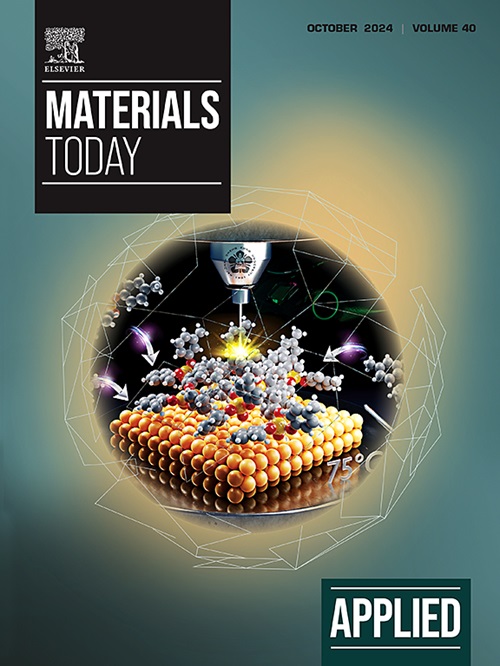Surface modification of LiFePO4 cathode enabled by highly Li+ mobility wrapping layer towards high energy and power density
IF 6.9
2区 材料科学
Q1 MATERIALS SCIENCE, MULTIDISCIPLINARY
引用次数: 0
Abstract
Surface-modified cathode materials have been developed to achieve high-performance lithium secondary batteries with higher capacity, rate capability, and longer cycle performance than bulk active materials. In this study, a new surface-modified active material was explored through a low-temperature -solution wrapping method (LiFePO@LiSiO composite). In addition, high Li-ion and electronic conductivity materials with amorphous nanostructures, in which the bulk LiFePO nanoparticles were covered with a LiSiO layer, were demonstrated. In lithium-ion batteries, the LiFePO@LiSiO composite demonstrated enhanced charge transfer kinetics, which lowered the interfacial resistance between electrode and electrolyte and resulted in enhanced electrochemical performance when compared to that of bulk LiFePO. Furthermore, LiSiO is introduced as a surface stabilizer and effective Li-ion conductor to avoid side reactions and prevent the dissolution of active materials into the electrolyte. The designed cathode delivers a high specific discharge capacity of 171.8 mAh g at 0.1 C with 99.76 % capacity retention after 150 cycles and a high capacity of 121.2 mAh g at 10 C. Moreover, Li-ion full batteries employing LiFePO@LiSiO and graphite displayed a high specific energy density of 416.078 Wh kg at a power density of 69.34 W kg at 5 C. In summary, this paper reports a new strategy based on low-temperature solution phase wrapping materials for developing active materials for high energy-power density energy storage devices.通过高锂电迁移率包裹层对磷酸铁锂阴极进行表面改性,实现高能量和功率密度
与块状活性材料相比,表面改性正极材料具有更高的容量、速率能力和更长的循环性能,已被开发用于实现高性能锂二次电池。本研究通过低温溶液包覆法(LiFePO@LiSiO 复合材料)探索了一种新型表面改性活性材料。此外,还展示了具有非晶态纳米结构的高锂离子和电子传导性材料,其中块状 LiFePO 纳米颗粒被覆有一层 LiSiO。在锂离子电池中,与块状 LiFePO 相比,LiFePO@LiSiO 复合材料表现出更强的电荷转移动力学,从而降低了电极与电解质之间的界面电阻,提高了电化学性能。此外,还引入了 LiSiO 作为表面稳定剂和有效的锂离子导体,以避免副反应并防止活性材料溶解到电解液中。此外,采用 LiFePO@LiSiO 和石墨的锂离子全电池在 5 摄氏度时的功率密度为 69.34 W kg,比能量密度高达 416.078 Wh kg。总之,本文报告了一种基于低温溶液相包裹材料的新策略,用于开发高能量功率密度储能设备的活性材料。
本文章由计算机程序翻译,如有差异,请以英文原文为准。
求助全文
约1分钟内获得全文
求助全文
来源期刊

Applied Materials Today
Materials Science-General Materials Science
CiteScore
14.90
自引率
3.60%
发文量
393
审稿时长
26 days
期刊介绍:
Journal Name: Applied Materials Today
Focus:
Multi-disciplinary, rapid-publication journal
Focused on cutting-edge applications of novel materials
Overview:
New materials discoveries have led to exciting fundamental breakthroughs.
Materials research is now moving towards the translation of these scientific properties and principles.
文献相关原料
公司名称
产品信息
阿拉丁
trimethylolpropane triacrylate (TMPTA)
阿拉丁
1,6-hexanediol diacrylate (HDDA)
 求助内容:
求助内容: 应助结果提醒方式:
应助结果提醒方式:


